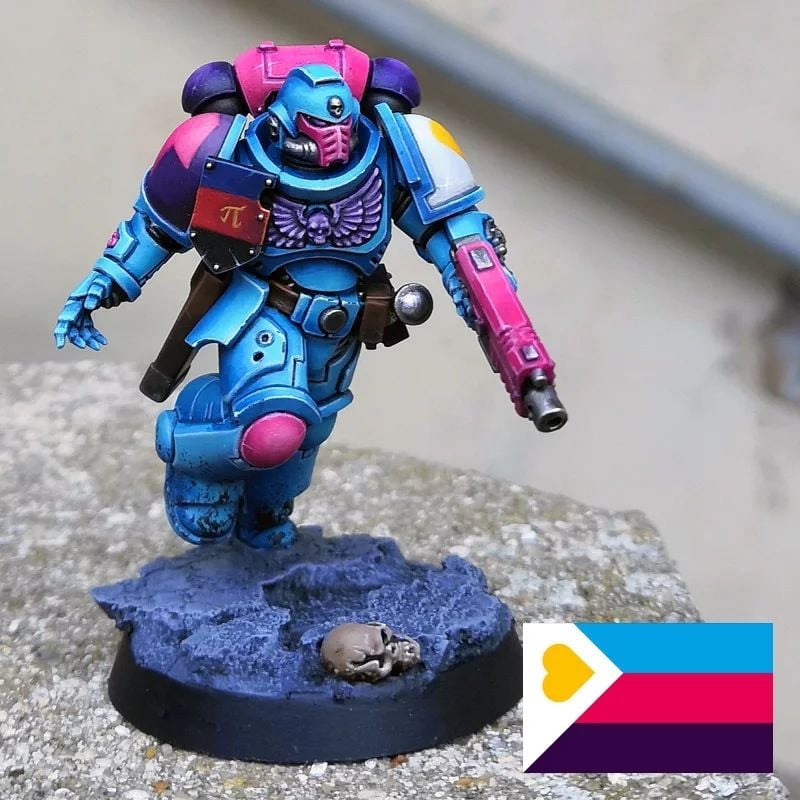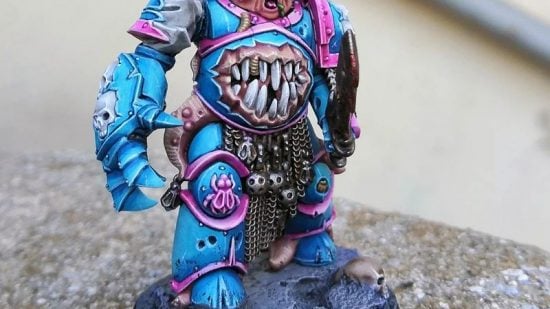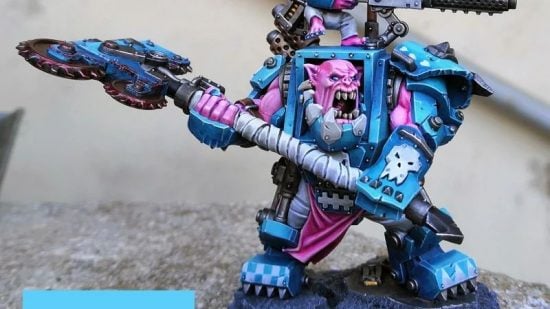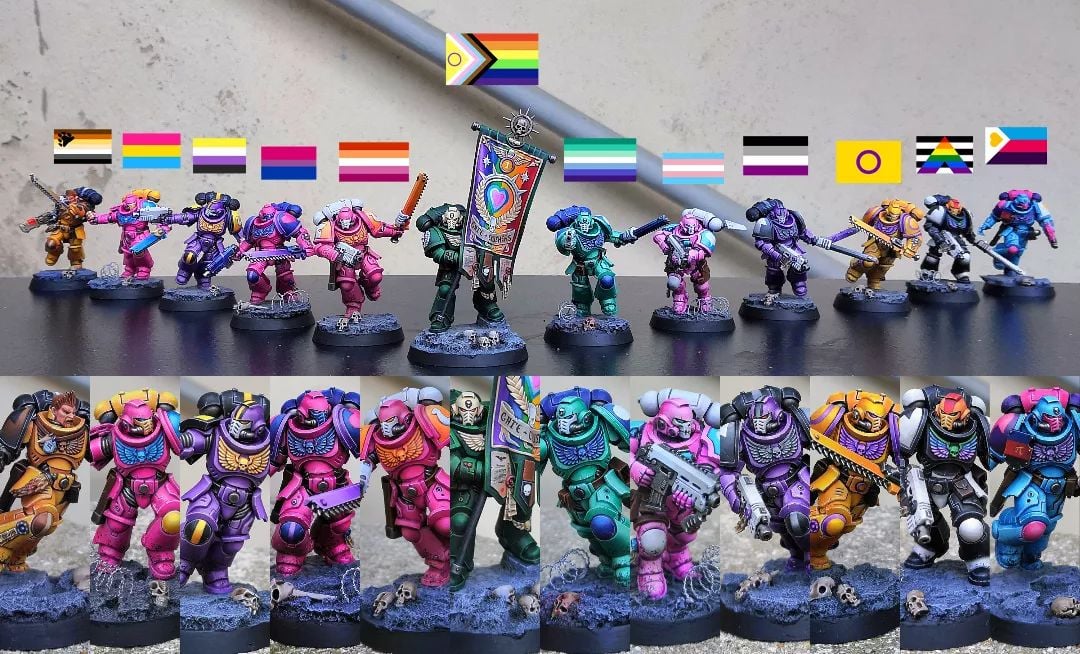Wargamer first reported on French miniature painter CerberusXt in December, showcasing a brightly colored Warhammer 40k Space Marine Pride Flag Kill Team. Cerberus (who prefers to be known by his online handle) has added yet more Warhammer 40k pride flag minis since then; we think the collection makes a great introduction to many of the flags you might see at an LGBTQ pride parade this June.
Cerberus hasn’t just been working on Space Marines; he’s also been painting up multiple Warhammer 40k factions in trans pride flag colors, as well as guides to painting miniatures.
You can check out more of Cerberus’ work at his Instagram. This article will introduce you to many pride flags via Cerberus’ marines, and explain a little about who the flag represents. The list is in alphabetical order. Not every pride flag is included, but Cerberus is still chipping away at the project!
If you’d like to learn more about LGBTQ history and contemporary issues, there are many resources online. I recommend Stonewall and The Trevor Project.
Asexual pride flag

Asexual people don’t experience sexual attraction. Someone can be asexual and still fall in love, and they may still enjoy sex or masturbation, but not for reasons of sexual attraction.
Bear pride flag
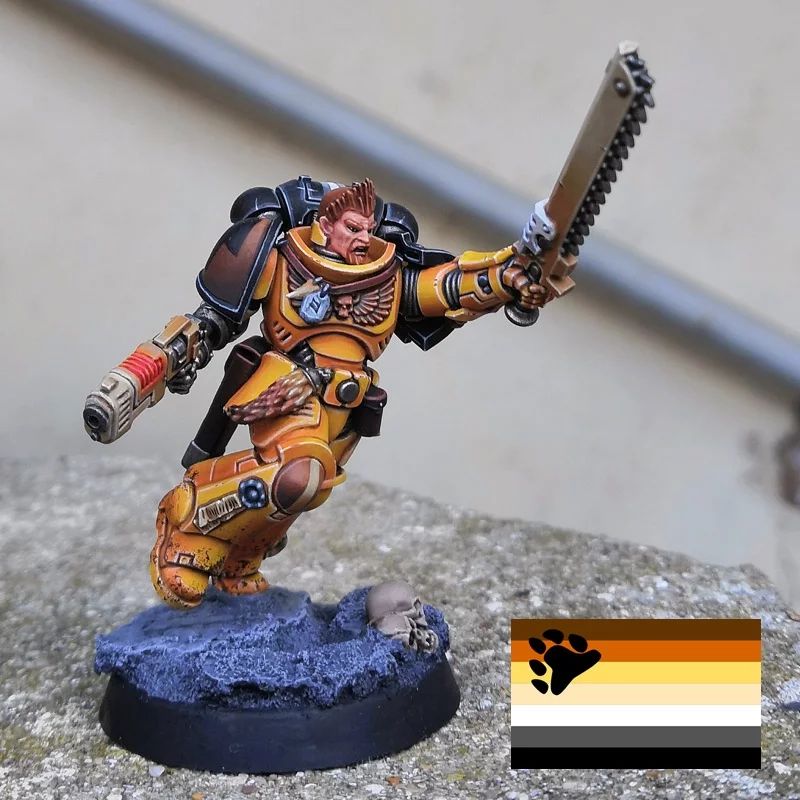
Bears are big, hairy gay men, often with dad bods. The Bear identity arose in the gay community in the 1980s. It was a response to stereotypes from outside the gay scene, and social pressure within it, that gay men were either effeminate, or extremely muscular.
Bisexual pride flag
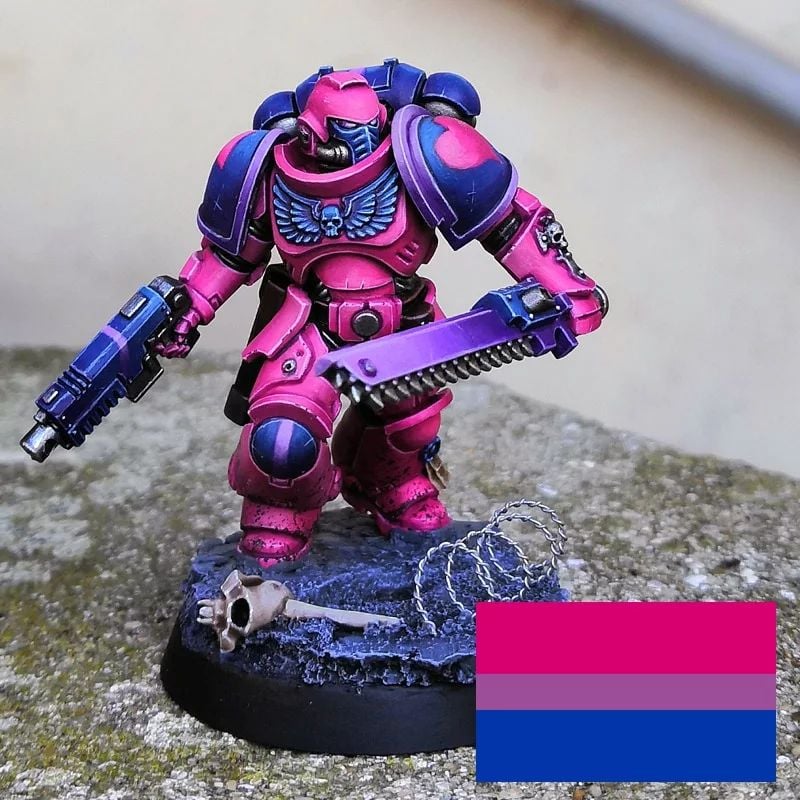
Bisexual people are sexually and/or romantically attracted to people of any gender. The term is older than ‘pansexual’ but, for most people, has the same meaning.
Gay men’s pride flag

Gay men are sexually and/or romantically attracted to other men.

Intersex pride flag
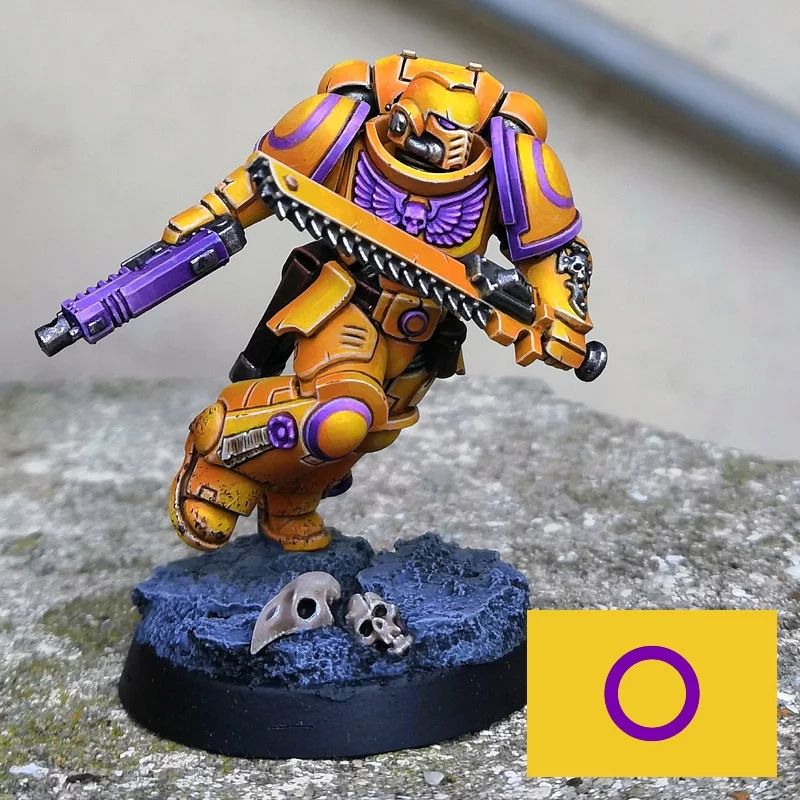
Intersex people have bodies that don’t totally conform to the assumed ‘normal’ for either male or female bodies. This may be totally invisible; the human body, and human development, is very complex. A little less than one in 50 people are intersex.
Lesbian pride flag

Lesbians are women who are sexually and/or romantically attracted to other women.
Nonbinary pride flag
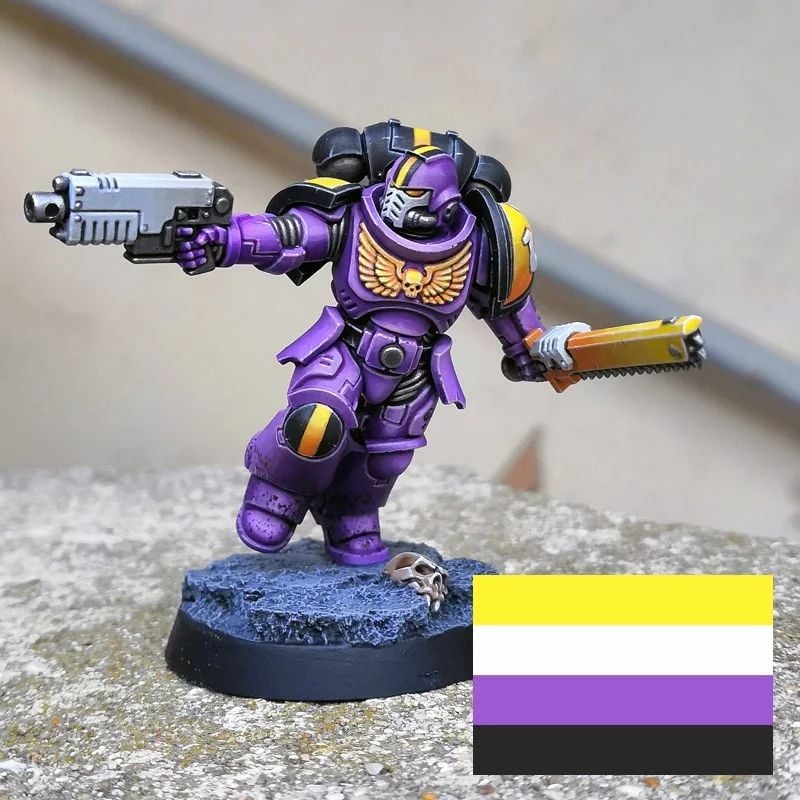
Nonbinary people feel that their gender identity doesn’t conform to either male or female. They may feel that it shifts between male and female (also called ‘genderfluid’), or that it doesn’t correspond to either.
Pansexual pride flag
Pansexual people are sexually and/or romantically attracted to people of any gender. The term is newer than ‘bisexual’ but, for most people, has the same meaning.
Polyamory pride flag
Polyamorous people are sexually and/or romantically attracted to more than one person. There’s no set way for people to organise their relationships polyamorously, but they all involve open communication, trust, and scheduling.
Progress flag

The Progress Flag is an evolution of the iconic Rainbow pride flag from the ’70s, with new arrows incorporating colors from more recent pride flags. Cerberus’ variant of the Progress Flag flag is held by a Space Marine from the Dark Angels chapter, which has literary connections to the LGBTQ scene: Primarch Lion El’Jonson is named after the Victorian poet Lionel Jonson, a gay man and author of ‘The Dark Angel’.
Straight Ally pride flag
Straight people who turn up and help out with LGBTQ people’s joys and trials are Straight Allies. There is a Straight Pride Flag (white and black bars) but it is not widely adopted.
Trans pride flag
Trans people identify with a gender that isn’t the same as their biological gender. For example, someone born with a biologically female body but who identifies as a man is trans-male.
This is not a matter of choice; trans-people often experience profound discomfort, called ‘dysphoria’, which can lessen greatly when they’re able to live in line with their gender identity.
You can learn more about how Cerberus paints his models in our original article about his Space Marine Kill Team.
Tabletop gaming is an incredibly diverse scene, and Wargamer has been showcasing some of that this pride month. Check out Amber Willmott’s exellent piece on why tabletop RPGs like DnD will always be an LGBTQ haven; or learn how an amazing Age of Sigmar Vampire drag queen was created.



